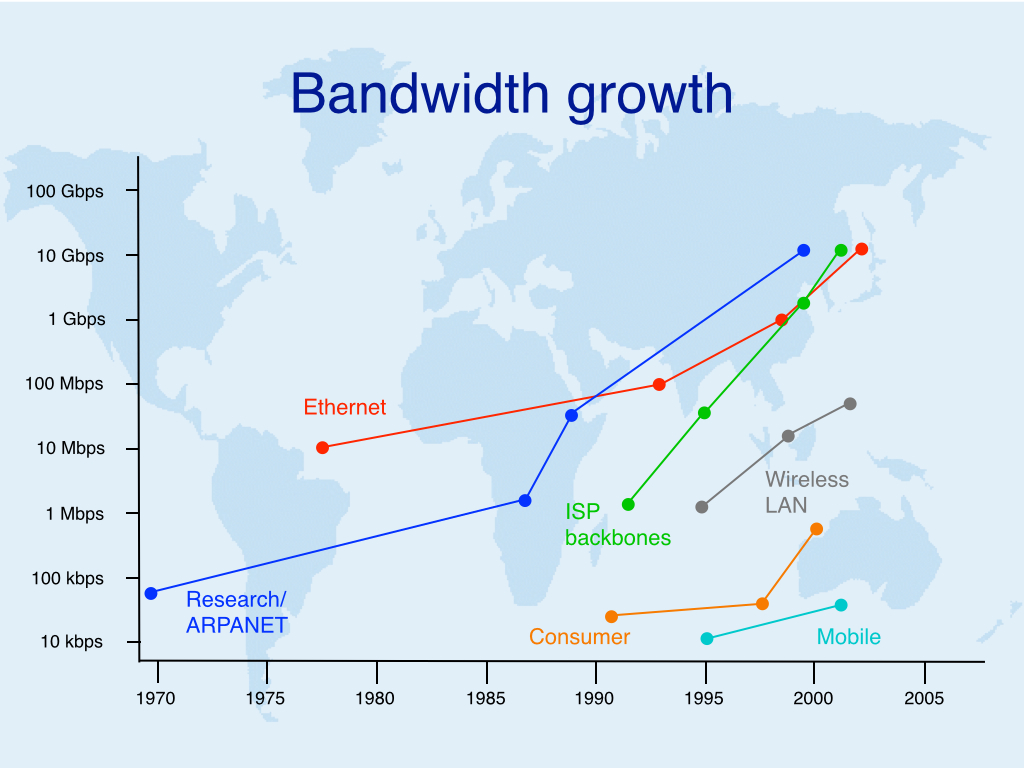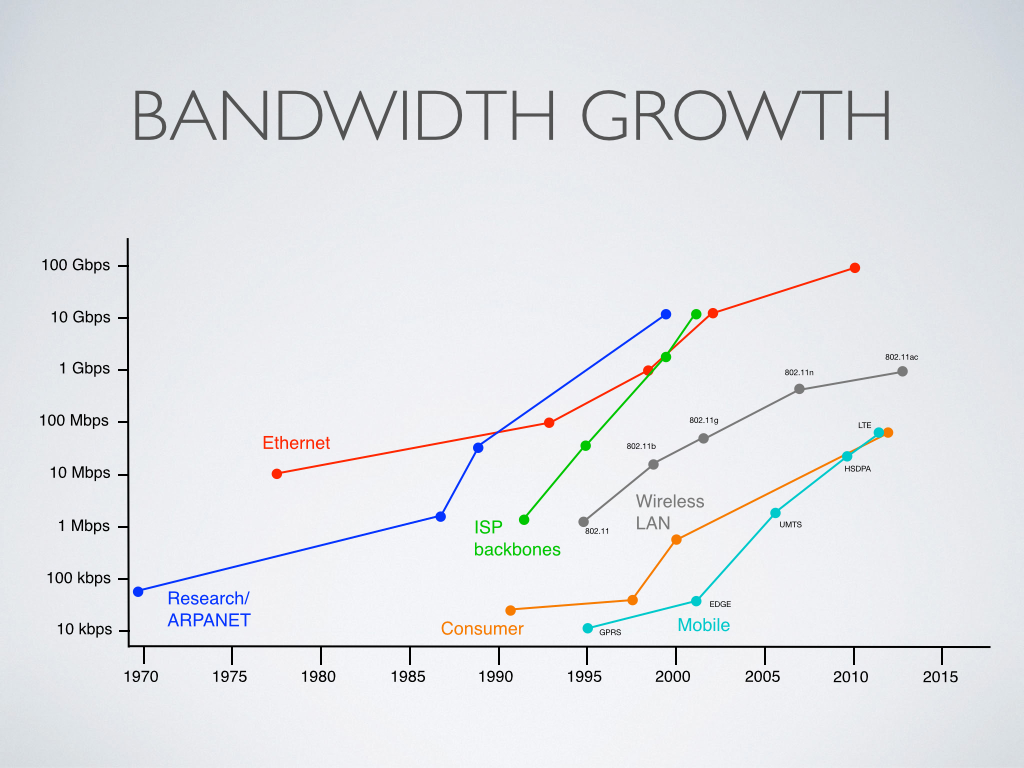
|

|

|
|
Home ·
BGP Expert Test ·
What is BGP? ·
BGP Vendors ·
Links ·
Archives ·
Books ·
My New BGP Book | ||
 (advertisement)
(advertisement)
| ||
|
A decade of bandwidth growth (posted 2014-09-04)
Next week I'm doing a guest lecture about the infrastructure of the internet. Turns out that I already talked about that in 2003 (PDF). One slide in that presentation caught my eye:
 The image shows how bandwidth in research networks and ISP networks has grown, as well as the bandwidth provided by technologies such as Ethernet, Wi-Fi, mobile data, and consumer internet access. All of them show a healthy growth, although some start from extremely modest beginnings. So I wondered what happened in the intermediate decade. Which would be:
 Because research and ISP networks are so diverse, I didn't include these here. Of course this is all somewhat arbitrary, because few people use the highest available speeds. For instance, cable and fiber to the home internet access tops out at 100 Mbps or higher, but many people still use around 10 Mbps, either because of price or because they're limited to some form of DSL and a relatively long distance to the nearest telephone exchange. And LTE should be able to reach 300 Mbps, but I don't think that's available in commonly available handsets. My impression that Ethernet had run out of steam is not entirely correct, the progression to 100 Gbps is roughly in line with the earlier growth path. Wi-Fi looks a little less impressive than I had thought on this logarithmic scale. However, there's just one super star here: mobile. It's hard to believe that we went from 100 kbps or so EDGE to 100 Mbps LTE in about a decade. Not everyone may be using LTE just yet, but 14 Mbps UMTS HSPA is in very wide use, there is really no reason to use anything less.
|
